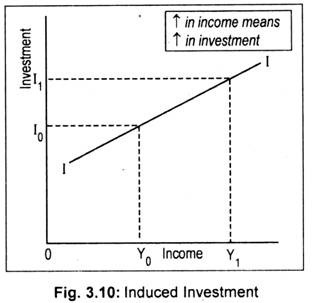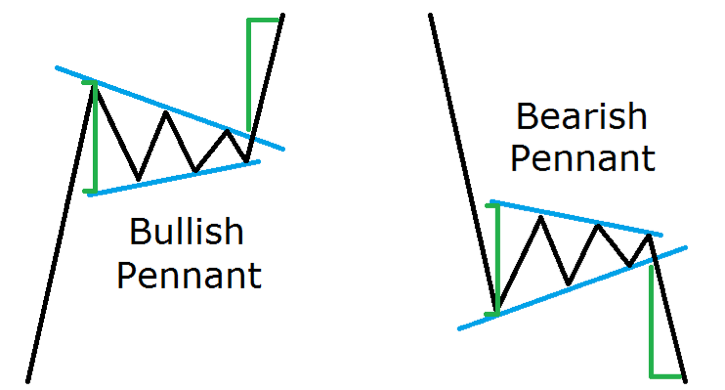Contents:


In addition, it cannot be used for very early-stage companies that are still quite far from reporting EBITDA. As mentioned earlier, retained earnings appear under the shareholder’s equity section on the liability side of the balance sheet. Companies today show it separately, pretty much the way its shown below.
LendingClub: Green Shoots Appearing (NYSE:LC) – Seeking Alpha
LendingClub: Green Shoots Appearing (NYSE:LC).
Posted: Thu, 13 Apr 2023 11:02:13 GMT [source]
Finally, provide the year for which such a statement is being prepared in the third line . Retained earnings also provide your business a cushion against the economic downturn and give you the requisite support to sail through depression. Identify inefficiencies in the company’s operations and implement process improvements to increase efficiency and reduce costs. This may involve reducing overhead expenses, negotiating better prices with suppliers, or eliminating unprofitable products or services.
Personally, I took two https://1investing.in/s from the company to help with personal liquidity as my partner has been jobless for most of 2020. A’s year 1, year 2, and year 3 tax years are now closed under the statute of limitation for assessment. When the par value is changed to reflect the stock split, no entry is required; however, the number of outstanding shares should be increased to reflect the split. Issuance costs incurred in connection with stock dividends should be expensed as incurred. This differs from issuance costs incurred for sales of stock, which are typically recorded as a reduction of the sales proceeds. The profits go into the company for use to pay down debt and to increase owner’s equity.
How Do You Calculate Retained Earnings?
Negative retained earnings can occur due to a variety of reasons such as increased expenses, declining sales, poor management decisions, or economic downturns. It can indicate financial distress, reduced borrowing capacity, and a lower level of investor confidence in the company. However, if a company experiences losses, its retained earnings can decrease, and if those losses exceed the accumulated retained earnings, it will result in negative retained earnings.

Accordingly, the cash dividend declared by the company would be $ 100,000. In fact, both management and the investors would want to retain earnings if they are aware that the company has profitable investment opportunities. And, retaining profits would result in higher returns as compared to dividend payouts. Other factors that can contribute to negative retained earnings include write-offs of failed investments, restructuring costs, and changes in accounting practices. However, by implementing sound financial strategies, companies can recover from negative retained earnings and rebuild their financial position. While there may be various reasons for a company to have negative retained earnings, it is essential to understand the impact and take necessary steps to rectify the situation.
What is Negative Retained Earnings?
This gives you the total value of the company that is shared by all owners. Owner’s equity and retained earnings are largely synonymous in many circumstances, but there are key differences in exactly how they’re calculated. Many small businesses with just a few owners will prefer to use owner’s equity. Retained earnings are more useful for analyzing the financial strength of a corporation.
Some companies use their retained earnings to repurchase shares of stock from shareholders. You might go this route for various reasons, such as increasing existing shareholders’ ownership stake or reducing the number of outstanding shares. You’ll find retained earnings listed as a line item on a company’s balance sheet under the shareholders’ equity section. It’s sometimes called accumulated earnings, earnings surplus, or unappropriated profit. In the worst-case scenario, the company has frequently sustained significant losses (i.e. negative net income), resulting in a negative retained earnings balance. A typical example of negative shareholder equity is when significant dividend payments are made to investors, which erode the retained earnings and make the equity of the company go into the negative zone.
Beginning retained earnings and negative retained earnings
However, the company has only generated $400,000 in profits during that same period. In this case, the company’s retained earnings would be negative, reflecting a deficit of $100,000. Additionally, we will discuss the changes in retained earnings and whether they are important to investors.

Whenever a company generates a surplus, it always has an option to pay a dividend to its shareholders or retain it with itself. Whether the company is retaining its profit or its paying part of profits as dividends. While additional paid-in capital balance represents a different amount and balance than the paid-in capital balance of a company, both of them are very closely related. Remember to do your due diligence and understand the risks involved when investing. Ensure your investment aligns with your company’s long-term goals and core values.
Sign up to a free course to learn the fundamental concepts of accounting and financial management so that you feel more confident in running your business. Now, add the net profit or subtract the net loss incurred during the current period, that is, 2019. Since company A made a net profit of $30,000, therefore, we will add $30,000 to $100,000. This is to say that the total market value of the company should not change. The retained earnings amount can also be used for share repurchase to improve the value of your company stock.
Fitch Affirms Nippon Life at IFS ‘A+’; Outlook Stable – Fitch Ratings
Fitch Affirms Nippon Life at IFS ‘A+’; Outlook Stable.
Posted: Thu, 23 Mar 2023 07:00:00 GMT [source]
Now, you must remember that stock dividends do not result in the outflow of cash. In fact, what the company gives to its shareholders is an increased number of shares. Accordingly, each shareholder has additional shares after the stock dividends are declared, but his stake remains the same. Thus, retained earnings are the profits of your business that remain after the dividend payments have been made to the shareholders since its inception.
Understanding Negative Retained Earnings
Asking the question of why is retained earnings negative for a business is not always straightforward. Identifying and addressing the problem could be an intricate and sustained piece of work requiring a substantial amount of intelligence and effort. Let’s look at an example of a retained earnings negative scenario for a hypothetical business. Learn accounting fundamentals and how to read financial statements with CFI’s free online accounting classes. This negatively impacts potential investors, but other potential stakeholders like bankers, creditors, large customers, suppliers, and staff also reluctantly rely on the entity.

Conversely, if a company has a low retained earnings percentage, it may indicate that it isn’t reinvesting enough of its profits back into the business, which could be cause for concern. By subtracting dividends from net income, you can see how much of the company’s profit gets reinvested into the business. When retained earnings are negative, it’s known as an accumulated deficit. Companies are not obligated to distribute dividends, but they may feel pressured to provide income for shareholders. Any investors—if the new company has them—will likely expect the company to spend years focusing the bulk of its efforts on growing and expanding.
An bookkeeping deficit within the first few years of a company’s lifespan may not be troubling, and it may even be expected. Retained earnings represent theportion of net profit on a company’s income statement that is not paid out as dividends. These retained earnings are often reinvested in the company, such as through research and development, equipment replacement, or debt reduction. One question popping into my mind is whether it is legal to pay out a dividend when the company has negative retained earnings or a net income loss. The Accumulated Deficit line item arises when a company’s cumulative profits to date have become negative, which most often stems from either sustained accounting losses or dividends.
- However, investors also want to see a financially stable company that can grow, and the effective use of retained earnings can show investors that the company is expanding.
- The account balance in retained earnings often is a positive credit balance from income accumulation over time.
- Retained earnings can be used to pay additional dividends, finance business growth, invest in a new product line, or even pay back a loan.
- In fact, what the company gives to its shareholders is an increased number of shares.
- Owner’s equity refers to the total value of the company that’s held in the hands of owners, including founders, partners, and stockholders.
And while retained earnings are always publicly disclosed, reserves may or may not be. They could use their brand’s strength to help them keep going until they were profitable. Not all companies can do this, and it depends on where they are in the life cycle; this could spell trouble if they cannot drive sales for the business. One of the items you will notice from companies like Facebook, Netflix, and Google, in their early years, they experienced losses from their bottom line. Again, I would like to point out a few things as we dive into Starbucks’ balance sheet. The first report we will look at is the statement of retained earnings.
Apple: Buybacks Should Be Judicious, Not Juicy (NASDAQ:AAPL) – Seeking Alpha
Apple: Buybacks Should Be Judicious, Not Juicy (NASDAQ:AAPL).
Posted: Tue, 14 Feb 2023 08:00:00 GMT [source]
As with ordinary stock splits, no journal entry is required if the par value will change, although the description of common stock in the equity section should be updated. A dividend is a payment, either in cash, other assets , or stock, from a reporting entity to its shareholders. Figure FG 4-2 provides definitions for some of the terms used in connections with dividends. Retained earnings are affected by an increase or decrease in the net income and amount of dividends paid to the stockholders. Thus, any item that leads to an increase or decrease in the net income would impact the retained earnings balance. Retained earnings appear under the shareholder’s equity section on the liability side of the balance sheet.

No Comment